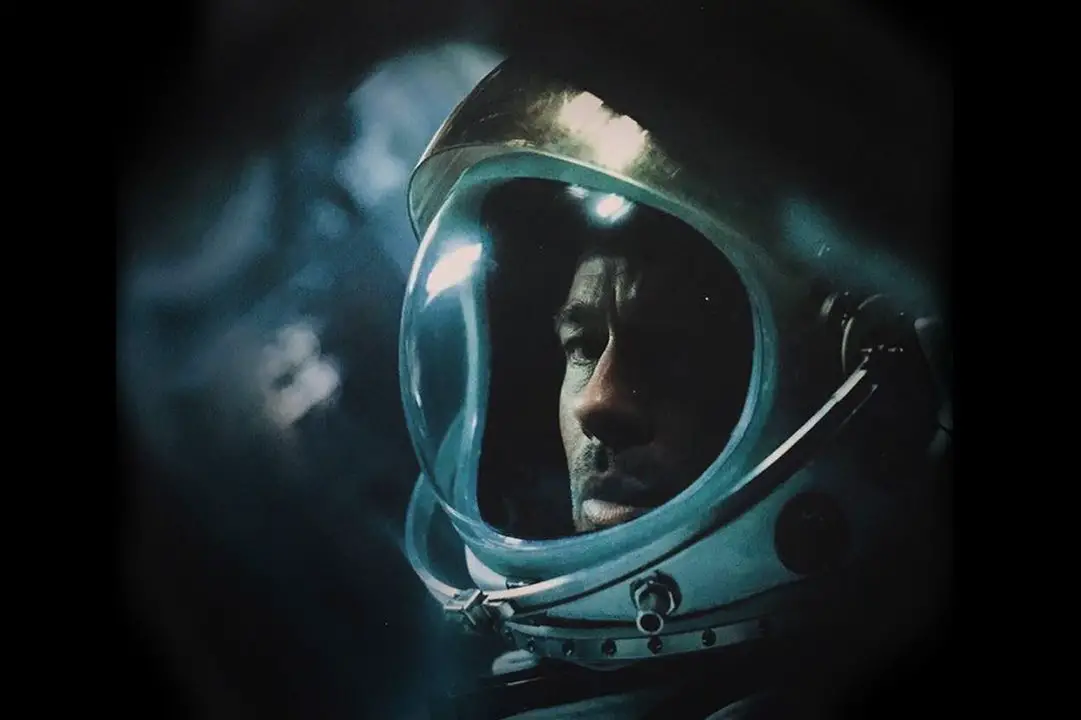“Ad Astra” is director James Gray’s first foray into science fiction filmmaking, but his individual narrative and thematic interests make for a sci-fi film unlike any other. Roy McBride, played by Brad Pitt, is tasked with destroying a spaceship responsible for dangerous power surges. The fate of Earth depends on his mission, but the urgency of the its success is of little value to Roy, because the spaceship is the hub for a project from which Roy’s father, played by Tommy Lee Jones, never returned. James Gray’s idiosyncratic choices in portraying total emotion and tragedies of near-mythic proportion are fully realized in this deft reworking of sci-fi themes.
“Ad Astra” plays with every expectation audiences might have for a film set in space. Rather than focusing on the impressiveness of future innovations in space travel, “Ad Astra” highlights the mundane eventualities of an Applebee’s on the moon and expensive in-flight blankets for the travel there. The film has the impressive imagery you’d expect in a relatively high-budgeted space film, but the spectacle is made especially visceral through a detailed focus on the sensory experience of the film’s leading player, Roy.
The trials of Roy’s journey are filtered through point of view shots and objective sound, which both serve to express the breakneck speed with which deaths and danger occur along the way. The narrative obstacles throughout “Ad Astra” might seem like incongruous pulp in an ostensibly po-faced science fiction film; however, the presentation of these elements does not feel distancing or self-congratulatory.
In fact, these elements are playing to the hints about the everyday realities of the not-too-distant future “Ad Astra” presents, while simultaneously expanding upon them. The elements of the world are expressed in such a modest, offhand way that the details are usually up to the viewer to piece together. The massive scope of the world portrayed in the film could overwhelm the personal story at the heart of it, but the clever twists on cinematic expectations allow for an equal exchange between the acting and the setting.
“Ad Astra” features a noticeable number of close-ups on Roy’s face; the invasive, probing shots mirror the intention of the constant barrage of psychological tests required of space travelers. This understanding of the character’s practiced stoicism encouraged through a life of space traveling experience makes each close-up feel so palpable. This technique was demonstrated through one gripping scene where Roy manages keeps his heartbeat at a steady 80 bpm as he falls to Earth from miles above the surface.
Other horrific revelations initially register as nearly imperceptible facial gestures, and Pitt’s restrained performance makes small breaks in his placid exterior feel overwhelmingly moving. “Ad Astra” values pure emotion over empty drama, so there is a noticeable absence of overwrought confessionals or arguments here; potentially dramatic turns in the plot affect Roy in few ways outside of his most minute gestures. The film’s plot is focused on making the often-selfish actions of men take on a substantial and tangible presence in their lives and the lives of those unfortunate enough to stand in their way.
Emotion is treated as the most transcendent aspect of humanity across Gray’s filmography, but the world of “Ad Astra” is one where emotion is characterized as an unacceptable obstacle to mission success. James Gray finds methods of expressing how people attempt to circumnavigate emotions essential to their well-being. Emotional avoidance and eventual self-discovery is portrayed effectively in Roy’s laconic professionalism and the voice-overs detailing his thought processes across the mission’s different stages.
The emotional damage accrued over the events of the film are difficult to apply to Roy’s actions early on in the film, but his feelings are expressed through frequent voice-over. Voice-over in a contemplative movie might seem like a ham-handed way of spelling out Roy’s thoughts, but it is essential to the film’s insistence in playing the grand against the human; Roy’s voice-over might initially seem insufficient in the way it comes off as a detached writer’s attempts to put words to knotty emotional trauma, especially in a film invested in presenting unfettered emotions.
However, the bluntness of his inner monologues have the effect of communicating they are originating from a man poorly-equipped to understand and deal with his current situation. Mirroring the language and tone of the voice-over, Roy voices his inner turmoil in a detached, emotionless way in a breaking point late in the second act. The voice-overs are the last layer of protective distance between Roy and his emotions. The film’s greatest accomplishment is in making the stuff of speculative fiction feel hopelessly insubstantial in comparison to the small aspects of humanity.
The totality of space is undermined by insuppressible humanity; the grand achievements of man stand in contrast to the wonders of space so they can reinforce the limitations and flaws inherent in human ambition. Often expressing the vastness of space in miles and time traveled, “Ad Astra” uses space to express palpable distance between human connection on Earth and the obsessive ambition necessary to explore outer space’s potential for discovery. Space is both essential and inessential to what boils down to a straightforward Eros versus Thanatos story.
The facets of the unnerving future of “Ad Astra” are only important in their ability to provide an avenue for Roy to achieve his goals, and his obsession gradually takes on an unintended, yet wholly necessary — at least to Roy — toll on the people unfortunate enough to stand in his way. Space’s expansiveness is the key to human survival or a blank nothing humans have projected their shortsighted ambitions on. Unsurprisingly, the least important part of the mission, Roy’s relation to his father, becomes the mythic element the story’s tragedy hinges on.
The most mythic aspect of “Ad Astra” is the journey’s cumulative weight on Roy and the inescapable bonds of family. Each of the actions and interactions carrying Roy across his mission add a subtle grimness to his mission; grave consequences happen so quickly and unexpectedly there is little chance to completely grasp their significance. As revelations are revealed about the truth behind Roy’s father, the events of the plot come together as a sort of familial determinism. The cruelty of obsession is the main point of criticism here, which boils down to a look at how people will become adept in the denial of their own humanity if it means they can achieve something they perceive as being beyond the scope of human endeavor. The scientific ambition in “Ad Astra” fails against all odds, but human connection and emotion is never truly stifled.
https://www.instagram.com/p/B2usm5QFiPP/
Although a lot of the movie might seem heavy and potentially maudlin, “Ad Astra” is an ultimately heartening and humanist adventure. It is filled with incredible sci-fi imagery, visceral action and understated comedy. After watching it, audiences are left with its suggestion of hopefulness in the face of bleak circumstances and personal failure, making its reception intensely poignant. Snapping the pieces of the film into stark focus in its parting moments, “Ad Astra” makes a bold declaration of confidence in the seeming insignificant minutiae of humanity. And, honestly, what other film is going to make me believe crying is more important than solving the universe’s greatest mysteries?
















